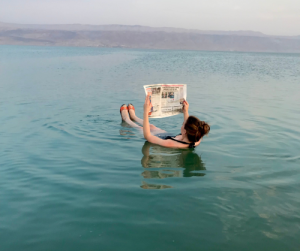Introduction
As the school year draws to a close, science teachers are often faced with the daunting task of classroom organization for the next academic year. While it may seem like a time-consuming endeavor you want to put off, leaving your classroom in an organized state at the end of the year can make a world of difference when you return in the fall.
Not only does pre-exit organization save time and reduce stress, but it also creates a welcoming environment for both you and your students for the upcoming year.
My Organization Failings

In the beginning, the norm for me was to do the minimum necessary to “get out the door” as quickly and quietly as possible. Classroom organization? Next year!
Checking off the EOY checklist provided by the admin was sufficient. Or, so I thought.
Thoughts like “I’ll get it done in August.” or “I’ll use my work days during the summer to do that.” weren’t good solutions. Sure, summer workdays were valuable for getting things done. (Yes, summer workdays were part of our contract.) But, those ideas weren’t enough. Besides, I spent enough time in my classroom during the year.
“It will work itself out,” I mused. That is until the disaster of last year’s disorganization stared me in the face upon my return the following year. My putting off came back around to bite me on the…
In this blog post, we’ll explore some practical tips and suggestions to help you efficiently get your organization mindset in place to prep your classrooms before summer break.
Decluttering and Cleaning

This category, in my opinion, takes up the most time. Before diving into the organization process, it’s essential to declutter and clean your classroom space.
Here’s how:
1. Sort through materials and supplies
– Take inventory of all classroom materials, from textbooks, supplies, and especially lab equipment.
– Discard outdated, duplicate, or unused items that are taking up valuable space.
– Donate or recycle materials that can be repurposed by others.
2. Cleaning
In the schools I have taught in, dusting, mopping, floor stripping & waxing…general cleaning…was handled by the custodians.
However, this did not include my storage cabinets and lab supply room.
Storage Solutions
If you found that you didn’t have adequate storage, investing in effective storage solutions can help keep your classroom organized year-round.
Regardless, you should consider the following:
1. Labeled bins or containers
– Categorize items such as supplies, textbooks, manipulatives, and lab equipment.
– Clearly label and place each container to make it easy to find what you need.
2. Utilize shelving units effectively
– Arrange materials in an orderly manner, with frequently used items within easy reach.
– Maximize vertical space by utilizing shelving units to store items off the floor (both in the classroom & lab supply room).
3. Digital storage options
– Scan and organize important documents to reduce paper clutter. (I always kept one or two hard copies handy.)
– Store and organize digital files in a centralized location (school cloud & backed up on a removable device) for easy access.
Classroom Layout

It may seem odd, but now is the time to think about next year’s class layout. Remember, a well-thought-out classroom layout can enhance productivity and create a conducive learning environment. With the year fresh in your mind (remember what vacation does to your memory), spend some time thinking about the past year’s layout… what worked, and what didn’t.
Where I have taught, desks, filing cabinets, and chairs… are removed during the summer cleaning. At the end of the cleaning, they are “placed back” in the room. However, having a paper or digital plan will make the layout easier to accomplish next year.
In those regards, consider how your class arrangements worked and didn’t work. Then develop a model (link) for any revisions to your layout and store them on a computer or elsewhere.
Documentation and Inventory

Keeping track of classroom materials and class and laboratory supplies is essential for maintaining organization.
Consider the following:
1. Create an inventory checklist
– Create a digital list of all materials and supplies in the classroom, noting quantities and conditions.
– Identify any items that need replenishing or replacing before the start of the next school year. The admin may require you to furnish them with a list of supplies before you leave for the year. If admin leaves that task until preplanning for next year, go ahead and make out your list before you leave for the summer.
2. Document organization systems
– Take photos of labeled containers and shelving units for reference.
– Create written instructions for maintaining organization to assist incoming teachers or substitutes.
Collaboration with Colleagues
Collaborating with colleagues can streamline the organization process and ensure consistency across shared spaces. Here’s how:
1. Communicate with incoming teachers (when possible)
– Share information about classroom organization and layout to facilitate a smooth transition.
– Discuss any specific needs or preferences to ensure the classroom meets everyone’s requirements.
2. Collaborate on shared spaces
– Coordinate efforts for organizing shared resources, such as lab equipment or supply closets.
– Establish clear guidelines for maintaining shared areas to promote accountability and teamwork.
Reflection and Adjustment
After organizing your classroom, take time to reflect on the effectiveness of your systems and make any necessary adjustments. Here’s how:
1. Evaluate the effectiveness of your organizational system.
– Identify areas for improvement based on your experience and feedback from colleagues or students.
– Consider what worked well and what could be done differently next time.
2. Make necessary adjustments
– Modify organization methods as needed to address any shortfalls or challenges.
– Strive for improving efficiency and functionality to create an optimal learning environment for students.
Conclusion
Leaving your classroom organized at the end of the year is a worthwhile investment of your time and effort. By following these practical tips and suggestions, you can ensure a smooth transition and set the stage for a successful start to the next school year. Remember, a well-organized classroom not only benefits you but also creates a welcoming and productive environment for students to thrive. So, roll up your sleeves, declutter, clean, and organize your classroom—it’s worth it!







